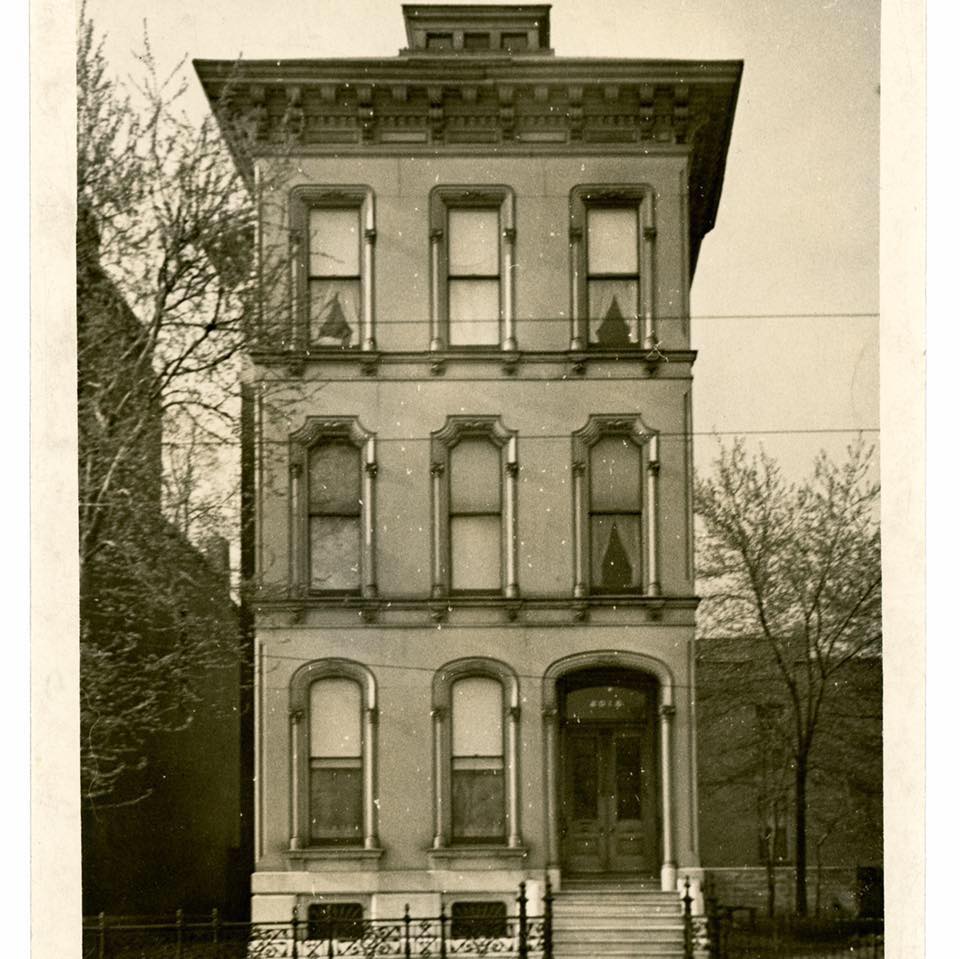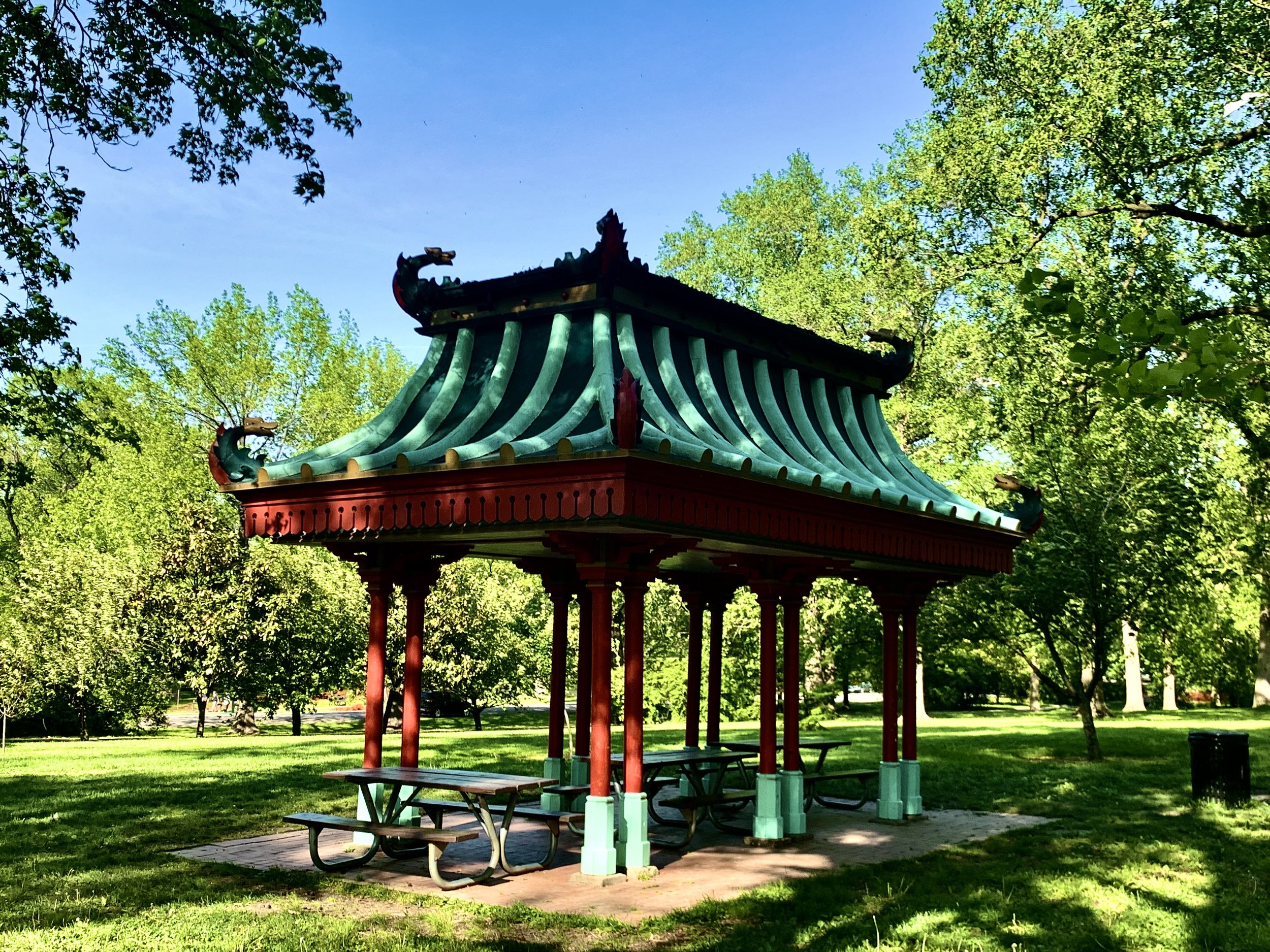Built: 1868
Style: Chinoiserie
Architect: Henry Thiele
Location: Tower Grove Park
On 1875 Compton and Dry Map: yes
On 1883 Hopkins Atlas: no
Historical significance: This is one of the original pavilions put up in Tower Grove Park after Henry Shaw donated the land to the city of St. Louis in 1868. At this time, Tower Grove Park was in the country, and none of the areas around it were developed yet. Shaw had it developed as a Victorian style park and garden, and the Chinese pavilion was one of several ornate pavilions laid out around the park. A group of ginkgo trees were planted around the pavilion. The pavilion was most recently restored in 2016.
Architectural significance: The Chinese pavilion is an example of the Chinoiserie style, popular in Europe and the US in the 19th century. The style was influenced by Western views of China and Chinese art and culture during the 19th century. It was one of many types of Orientalist architecture that became popular during the 19th century, along with Moorish influences, such as the minaret. Henry Shaw, who immigrated from England, would have seen the Great Pagoda in the Kew Gardens in London, and may have been partially inspired by it when laying out the park.

